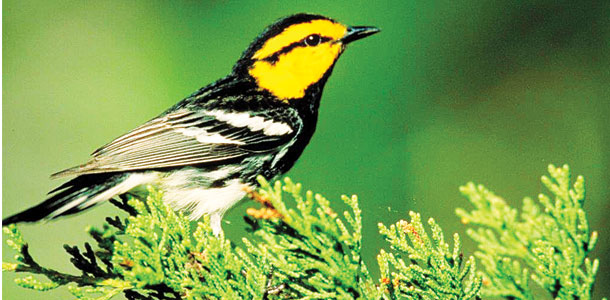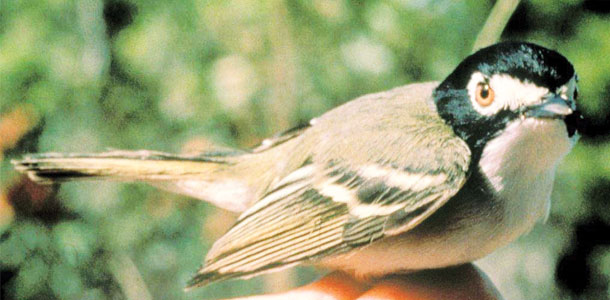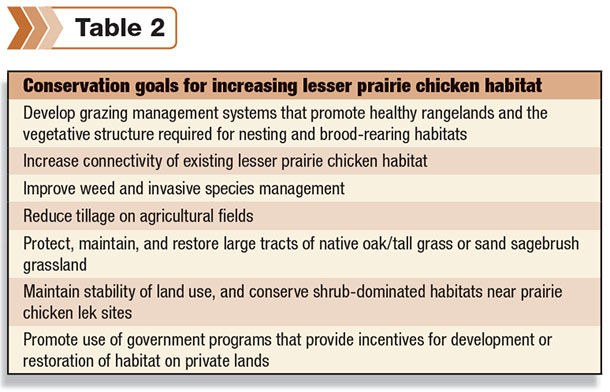Concerns are often alleviated, however, when the federal government, state agencies and landowners work cooperatively to conserve or re-create habitat in which the species thrives. The reason: Improved habitat often increases livestock grazing capacity.
“When ranching with endangered species, it is important to comply with the Endangered Species Act (ESA),” says Sean Edwards with the U.S. Fish and Wildlife Service.
“The act prohibits a ‘take,’ which is defined as harassing, harming, pursuing, hunting, shooting, wounding, killing, trapping, capturing or collecting a protected species or attempting to engage in any such conduct. Harm is further defined to include significant habitat modification or degradation that results in death or injury to a listed species by significantly impairing behavioral patterns such as breeding, feeding or sheltering.”
As stated in the Endangered Species Handbook, stiff penalties may be imposed for violations of the act. Felonies may be punished with fines up to $50,000 and/or one year imprisonment for crimes involving endangered species, and $25,000 and/or six months imprisonment for crimes involving threatened species.
Misdemeanors or civil penalties are punishable by fines up to $25,000 for crimes involving endangered species and $12,000 for crimes involving threatened species. A maximum of $1,000 can be assessed for unintentional violations.
In most cases, the endangered species can be protected with minor changes in operational procedures. This has been demonstrated by increased numbers of many endangered species across the U.S. as a result of good land conservation and improved range and pasture.

Golden-cheeked warbler
Texas Parks and Wildlife Department (TPWD) biologists describe the golden-cheeked warbler as a small migratory songbird, 4.5 to 5 inches long with a wingspan of approximately 8 inches.
Males have a black throat, back and cap. They have yellow cheeks with a black stripe through the eye. Golden-cheeked warblers’ entire nesting range is currently confined to 33 counties in central Texas where Ashe juniper (blueberry cedar) is found.
“Golden-cheeked warblers,” Edwards explains, “are dependent on mature Ashe juniper primarily for bark strips used to build their nests.
Bark is obtained from mature junipers at least 15 feet tall with a trunk diameter of approximately 5 inches at 4 feet above ground. It is essential that Ashe juniper have shredding bark, at least near its base, for it to be useful to the warbler.”
“Occurrence of Ashe juniper does not necessarily signify the presence of golden-cheeked warbler habitat,” explains Ricky Linex, USDA Natural Resources Conservation Service (NRCS).
“Mature Ashe juniper in a natural mix with oaks, elms and other hardwoods in relatively moist areas such as steep canyons and slopes and adjacent uplands are considered habitat types that are highly likely to be used by warblers.

“Although cedar occurs abundantly over much of the Texas Hill Country, a relatively small portion of the area is actually usable warbler habitat,” Linex emphasizes. Areas not considered warbler habitat are listed in Table 1.
“Conservation of golden-cheeked warbler habitat is part of the Rocosa Ridge Ranch operational plan,” states Bruce Berg, owner. “We have excellent warbler habitat on the south end of the ranch along the Bosque River where slopes are too steep for grazing cattle.
Re-growth cedar was mechanically removed in this area to prevent it from destroying the hardwoods. Native grasses were established where the cedar was removed.
Virgin cedar, that produces bark for warbler nesting, was left undisturbed. This project is part of the Fort Hood Recovery Credit System.”
The Golden-Cheeked Warbler Recovery Credit System is a habitat exchange program whereby industry and other entities benefit from a predictable value for credits that can be purchased to offset impacts of development.
There is a standard set of rules and regulatory assurances that projects can move forward even if a species is listed. Berg sold credits to the Fort Hood Army Base to help defray conservation costs.

Black-capped vireo
Black-capped vireos nest in central and southwest Texas, a few counties in central Oklahoma, and in Coahuila and Nuevo Leon, Mexico.
They winter along the western coast of Mexico. In Texas, vireo habitat is on rocky limestone soils of the Edwards Plateau, Cross Timbers and Prairies and eastern Trans-Pecos eco-regions. To a limited extent, vireo habitat is on igneous soils in the Chisos Mountains.
National Audubon Society says that the common name for the warbler-sized vireo appropriately describes the adult male. He sports a black cap and has white “spectacles” interrupted with black above the eye.
Wings are dark olive to black with two pale yellow wing bars. Females and juveniles are similar to males but have a gray cap and a brown iris. The black-capped vireo measures about 4.5 inches long with a 7-inch wingspan and weighs 0.3 ounces.
All black-capped vireo habitats are similar in vegetative structure but are highly variable in plant species, temperature and rainfall.
According to TPWD biologists, typical habitat is characterized by shrub vegetation extending from ground level to about 6 feet or more and covering from about 30 to 60 percent or greater of the total area.
Rio Grande turkey
Good deer and turkey habitat are similar in appearance. TPWD recommends that woody plants cover 50 percent or more of deer habitat.
Turkeys require knee-high grasses and weeds for nesting, brood-rearing and for a supply of insects on which poults can feed. Shrubs provide cover and the mature trees provide roosting areas.
Dale Prochaska of TPWD stated, “Black-capped vireo and golden-cheeked warbler are often seen at the Kerr Wildlife Management Area.
In creating and maintaining good habit for white-tailed deer and Rio Grande turkey, we also created good habitat for these two endangered species.”
Turkeys and deer are important enterprises on many ranches, whether they are for family recreation, leased hunting, or eco-tourism. Emphasis on wildlife habitat management has resulted in vireo population increases to the point that they are being considered for de-listing.
Lesser prairie chicken
The lesser prairie chicken is described by NRCS as a grassland-nesting bird found in mixed grass, sand-sage and shinnery oak prairies of western Kansas, southeast Colorado, northwest Oklahoma, the Texas Panhandle and eastern New Mexico.
It is a medium to large chicken-like bird and a smaller, paler version of the greater prairie chicken. The bird’s colors are striped brown and white. The lesser prairie chicken has a short, rounded tail. Its wings are rounded in flight.
This species was recently listed as threatened because populations have declined significantly due to fragmented and degraded habitat combined with recent droughts.
NRCS established the Lesser Prairie Chicken Initiative (LPCI) to help ranchers and farmers maintain the viability and profitability of their operations and voluntarily create and enhance lesser prairie chicken habitat.

The goals of LPCI are listed in Table 2. Prairie chicken habitat improvement also enhances grazing capacity, and in the case of farming, soil health is improved and erosion is reduced by minimum tillage.
Ranching with endangered species involves conservation programs that can increase profits through increased forage production. Implementation of conservation practices cost money but cost-share programs are often available through state wildlife departments, U.S. Fish and Wildlife, and NRCS. ![]()
Robert and Janelle Fears are freelance writers based in Texas.
PHOTOS
PHOTO 1: Lesser prairie chicken.
PHOTO 2: Golden-cheeked warbler
PHOTO 3: Black capped vireo. Photos courtesy of Texas Parks and Wildlife.








